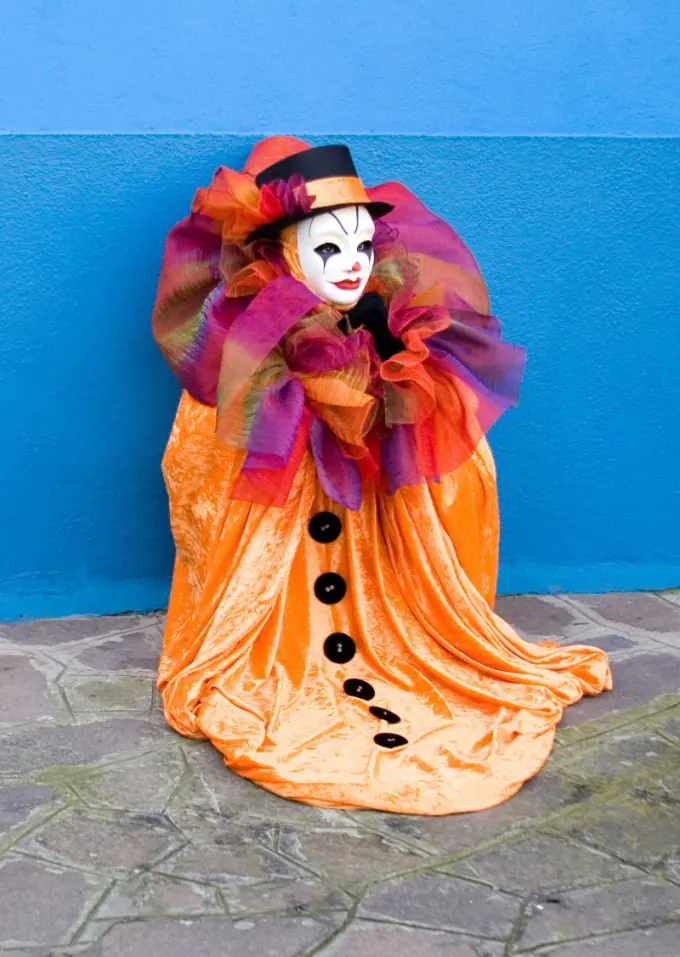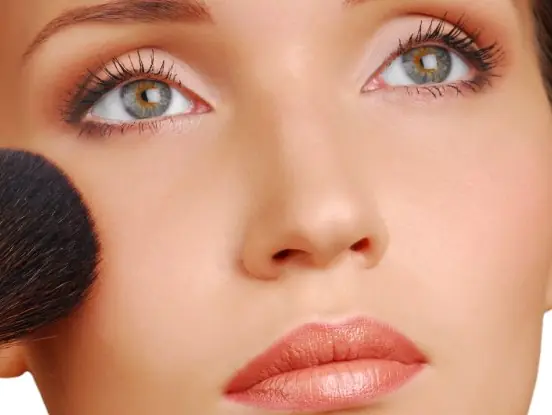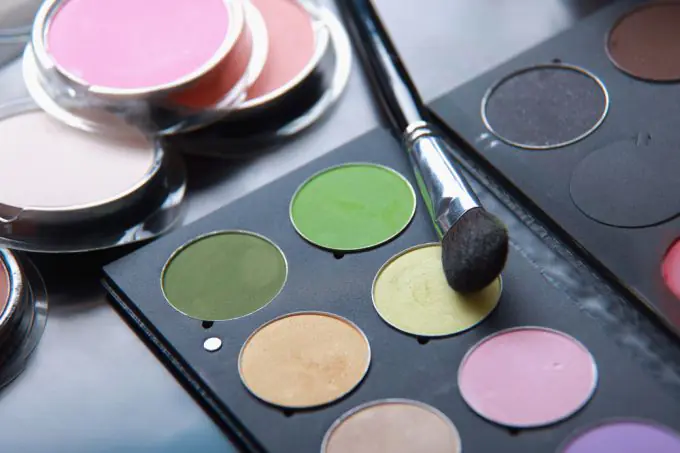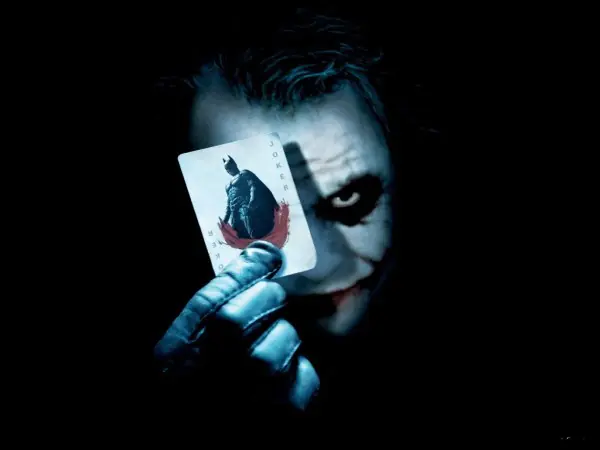
- - heavy makeup;
- — cream “Nivea”, “Children’s” or Vaseline;
- - several flesh-colored bases (theatrical sets usually have 2 or 3);
- - dry makeup with skin tones;
- - powder;
- - shadows;
- - blush:
- - gummosis;
- - glue;
- - cotton buds;
- - cotton pads;
- - sponges;
- - brushes;
- - napkins;
- - mirror.
The color of the main makeup depends on the character of the character, lighting and other factors. Of course, the face of a European princess will be paler than the face of a pirate in the same lighting. Accordingly, for the first character choose the lightest shade, and for the second - darker.
You need to be able to not only apply makeup well, but also remove it. This can be done in several ways. Old actors remove their makeup with a special plastic knife. You can use alignin or fatty cream. Sculptural parts are separated with a special solvent, which can be purchased in the same place as glue.
- how to apply makeup

- how to do everyday makeup

When the purpose of makeup is correction, the shape, thickness and color of the eyebrows play a big role. Thick, wide eyebrows are not suitable for small eyes; a much better solution would be to make the eyebrow thinner and higher using tweezers or curlers. Eyebrow hairs should lie parallel to each other.
It happens that the eyes seem small and expressionless when the shape of the eyebrows is chosen incorrectly. Most often, the most suitable shape is the natural one, which should be corrected with tweezers, removing excess hair. But it happens that the shape of the eyebrows given by nature is not suitable. Then it is best to take advice on choosing the ideal shape or visit a specialist.
If your eyes are deep-set, a light eyeshadow is a great base. The problem of an overhanging eyelid will be solved by darkening the base color in the outer corners of the eyes. This technique is also suitable for sunken and wide eyes.
A serious mistake would be to apply dark shadows to the entire surface of the moving eyelid; this technique will make the eyes even smaller.
If you have naturally long and thick eyelashes, then black or brown mascara will be sufficient, depending on the type of makeup (day or evening). The brush should be drawn towards the outer corner of the eye in order to create the appearance of an open look and large eyes. If your eyelashes are not particularly thick and long, you should use a pencil or eyeliner.
A thick eyeliner line will only make the problem worse. It is necessary to carefully highlight the eyelash line, highlight it slightly and shade it with a sponge or brush. Do not highlight the inner corner of the eye with pencil or eyeliner.
The color of makeup shadows depends on the color of your eyes and the time of day. Daytime makeup involves soft, shallow, natural colors. For evening makeup, you can add bright accents.
Beige and natural pink shadows are perfect for blue-eyed and gray-eyed girls. Green eyes will look great with pearlescent shades; shadows of a soft orange hue are also suitable. Brown-eyed girls can use shadows of natural colors in makeup: brown, olive if the color type is warm and shades of the sea if the color type is cold.
You should draw your eyes with a white pencil from below, closer directly to the iris. To complete your eye makeup, apply mascara to the bottom contour and outer corner of the eye.
Complete eye makeup will not be enough to make your eyes more expressive. The right tone for the face is important. Often, the effect of small eyes is achieved due to circles under the eyes, which can be disguised with concealer, foundation, or simply by adjusting your sleep patterns. Sometimes the cause of dark circles under the eyes is unstable makeup, so you should carefully choose eye shadow and mascara.
The cheekbone line, highlighted in a dark tone, will highlight the beauty of the eyes. Blush of an unobtrusive shade applied to the face will help achieve a natural shine to the eyes.
Make-up is used by all artists without exception - singers, theater and film actors. The makeup that we use in everyday life - makeup - has a fundamental difference from stage makeup. Therefore, we will tell you how to properly apply makeup on your face.
Stages of applying makeup
- The first thing to do is to thoroughly clean your face with soap or foam.
- Applying the base. It can be liquid or solid; when applying a solid, you can lightly moisten the sponge with water. Sometimes the foundation should be applied not only to the face, but also to the hands and open parts of the body according to the role.
- Creating glare. Mix a darker and lighter tone, emphasize, highlight the cheekbones, nose, and oval of the face. You can even create a different facial expression with highlights.
If you are wondering how to apply makeup to a child's face, it is important to remember that when working with children, you do not use foundation and heavy makeup, as for artists. This is usually a water-based makeup.
How to apply makeup at home?
It’s quite simple - do everything as usual, but if it’s stage bright makeup, then to get an adequate idea of how you will look on stage, brighten the light and move as far away from the mirror as possible - this is approximately how you will look see the viewer. It is unlikely that it will be possible to apply makeup the way actors apply makeup - professional makeup artists do this there, they know better from the outside, where to add, where to remove. Learning how to apply makeup correctly on your own is quite difficult, but quite possible. For example, you can look up how to apply clown makeup on the Internet, and if you want to learn the process in detail, you can contact a theater school; usually such schools have training courses on “How to apply makeup on your face.”
Creative studios offering their services are usually connected with each other, and even vocal courses for beginners can serve as an excellent impetus for the subsequent development of the artist. Even for theater actors, voice staging is very important - try speaking your role from the stage, so that even the last rows can hear it. You can’t do this without voice training; vocal lessons, which you can attend in parallel with the theater studio, can help.
If acting in the theater is your serious hobby, then you need to strive for growth, you can ask to be present in a small theater when the actors are putting on makeup - you will see how the makeup is applied, how the actors prepare for the performance, how the speech apparatus is warmed up - this will be an invaluable experience. You will learn not only how to apply makeup, but also get an idea of what happens in dressing rooms and how to prepare yourself for a scene.

Without makeup, the actors' faces look dull and unnatural in the light of spotlights and lamps. Even small productions cannot do without giving the actors a look that matches the image. To do this, you need to know how to apply makeup at home. This is not easy for a beginner to do, especially when you don’t want to spend money on expensive makeup cosmetics and have to do everything yourself.
Makeup recipes
The composition of makeup prepared at home depends on what exactly it is intended for, that is, what the actor will do: play live on stage or filmed on video. It is on this basis that two types of makeup are distinguished: “theatrical” and “cinema.”
To prepare theatrical makeup you will need children's watercolors and salted lard, from which you need to render the fat. For “cinema” makeup, Vaseline oil is used instead of lard.
If you need to prepare light makeup, in which the actor will not be in a hot room and move too much, take the ingredients in a 1:1 ratio. If the conditions are opposite to others, 2:1 (less fat so that the makeup turns out thicker and does not run).
The ingredients are combined gradually, in small parts, with constant stirring. One secret: it’s better to mix the ingredients on glass, as if rubbing them until smooth.
The paints should be watercolors, because they do not irritate the skin as much as gouache paints, and children's paints, because they are not toxic. We recommend preparing makeup “at a time,” that is, as much as you need for one performance, because the product prepared without any preservatives does not last long. If you still need to store the prepared makeup for several days, put it in the refrigerator.
Preparing to apply makeup

You need to prepare your face before applying makeup. First of all, you need to comb your hair back, and it is even better to use a cotton bandage that will hold small hairs.
Don’t forget to prepare your skin for makeup, for this you need:
* lubricate your face with Vaseline or fatty cream;
* wipe your face with a cotton pad to remove excess cream.
Remember that, just like when applying regular foundation, you should not press on your facial skin. Everything needs to be done with soft massage movements from the edges to the center. The skin should not remain dry, there simply should not be excess makeup on it, otherwise the makeup will run.
This simple procedure will help you apply dry makeup in an even, even layer. However, if you use paints containing a high percentage of fats, you should not lubricate your face with Vaseline or cream.
Applying base makeup
Perhaps this is the most important stage, the success of which determines the quality of the entire image. If you use ready-made makeup paints, you will find three tones in the box:
As a rule, they are not used in their pure form, but mixed with red, yellow or brown paint. Which one depends on the tone of your face and the color you want to achieve.
Apply the tone with patting movements, as if driving it into the skin. Do not rub or smear the tone: this will not lead to anything good. Remember that the foundation is applied not only to the face, but also to the neck and earlobe to avoid the “mask” effect. Some make-up artists use liquid makeup or dark powder for the neck.
Color accents on the face are placed with blush. There are several types of theatrical makeup: for an old, sickly, and young face. Of course, the choice depends not only on the age of the actor and the character into which he needs to be transformed. Make-up artists take into account the color of a person’s eyes and hair, and the tone of his face.
For example, dark dye is added to blush for dark skin to get a color that will look harmonious. For light colors use pale pink shades. First, blush is applied to the cheekbones, moving from the center of the face to the edge of the ear, gradually reducing the color saturation to nothing. Be sure to mark the temporal lobes and lateral parts of the nose.
And for dessert, a video tutorial on cute and funny makeup from everyone’s favorite cartoon.



